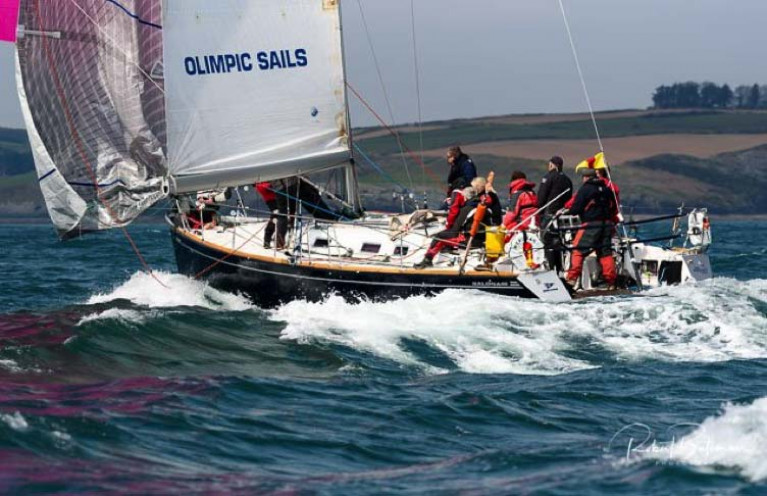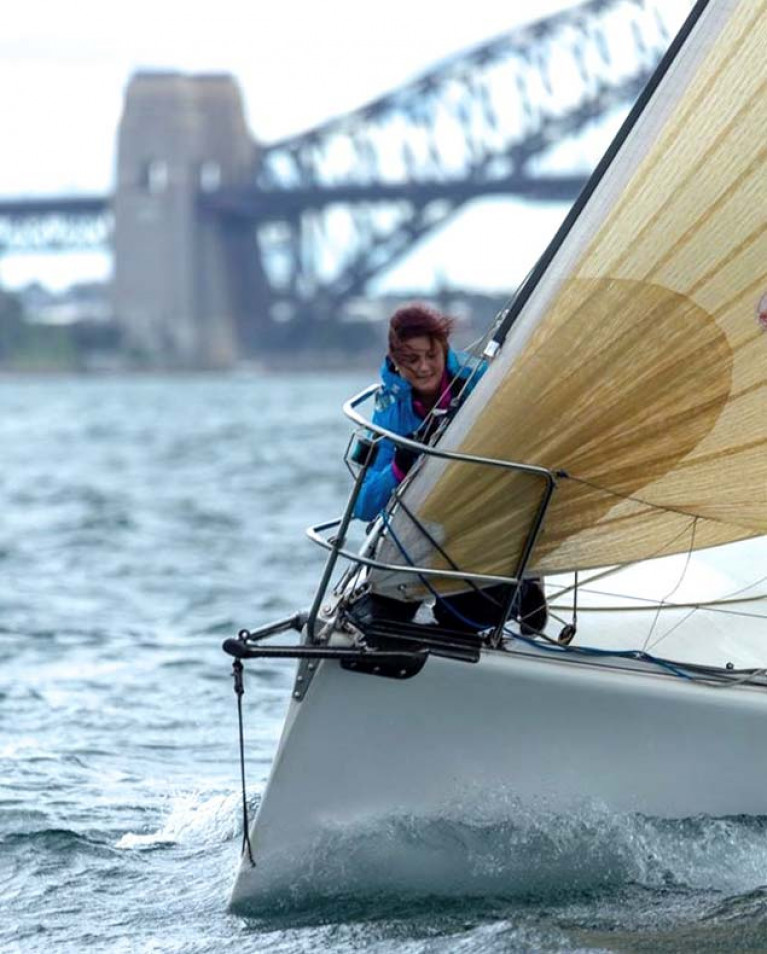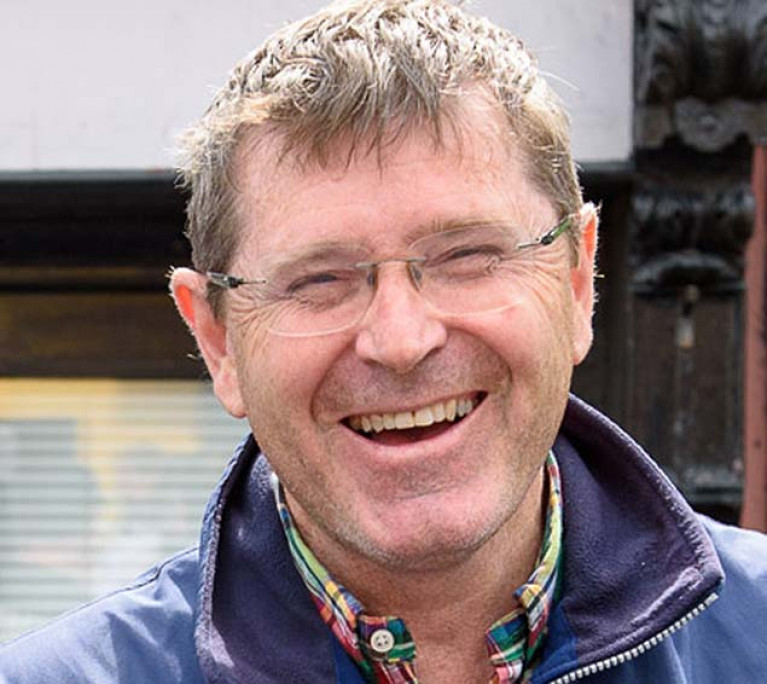Displaying items by tag: Kinsale Yacht Club
Axiom Private Clients to Sponsor Kinsale Yacht Club's Spring Series
Former Club Commodore, Tom Roche of Axiom Private Clients has come on board as title sponsors for this year’s Spring Series at Kinsale Yacht Club writes Brian Goggin.
Tom and his wife Ursula have campaigned their Solona 45 - Meridian for many years now and have been big supporters of cruiser racing along the South Coast
Meridian will once again have strong competition in class Zero from Conor Doyle’s XP 50 Freya as well as visitors from Royal Cork, Conor Phelan’s Jump Juice and Denis Murphy’s Nieulargo.
Commenting on the announcement Michael Walsh Commodore of Kinsale Yacht Club said “we are always so thankful to our sponsors and volunteers within Kinsale Yacht Club and we are very grateful to Tom and Axiom Private Clients who have come onboard as sponsors. The Spring Series is always a fantastic way for our cruiser racers to hone their skills and crew work for their busy season ahead”
And 2020 will certainly be a busy season for Tom Roche and crew as Tom has organised a crew from Kinsale to travel to Malta where they have chartered a new X Yacht to take part in this year’s Middle Sea Race.
This year’s Spring Series will run from 5th to the 25th of April under the stewardship of recently retired Commodore David O’Sullivan as Principle Race Officer.
Gusty Winds for First Race of Kinsale Yacht Club Spring Series
Westerly winds of 16 to 20 knots greeted the first day of the Custom Rigging Spring Frostbites Series at Kinsale Yacht Club on Sunday.
Squibs, Toppers and Lasers competed over a course set by the race officer team of John and Valerie Stallard, Susan Horgan, Bruce and June Matthews.
Conditions were very gusty so it was decided to run a single race only before the fleet was sent ashore.
Bob Bateman captured the action (below) in the morning race.

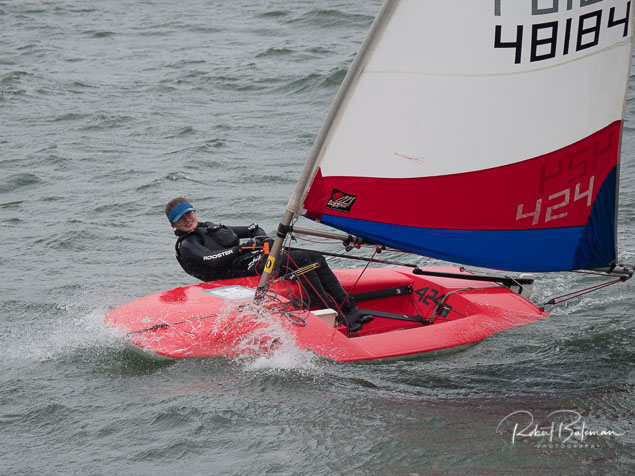
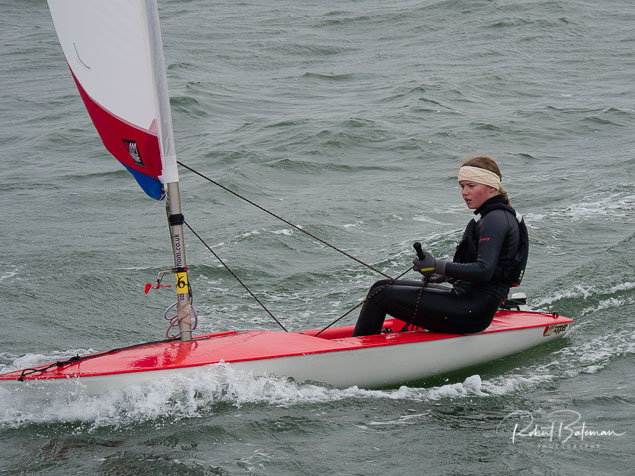

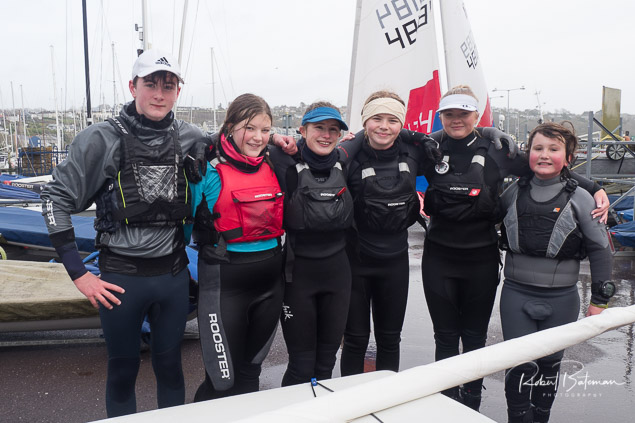
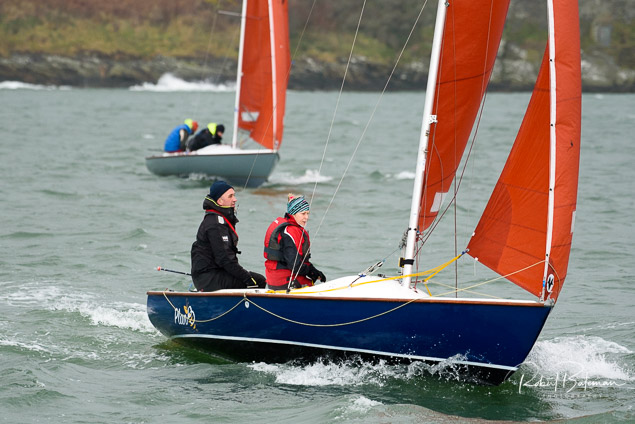
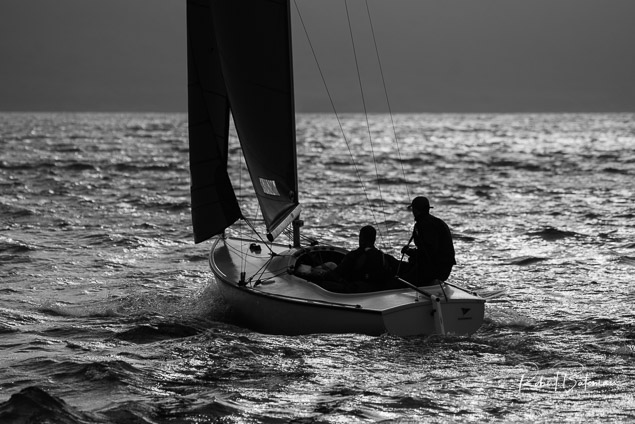
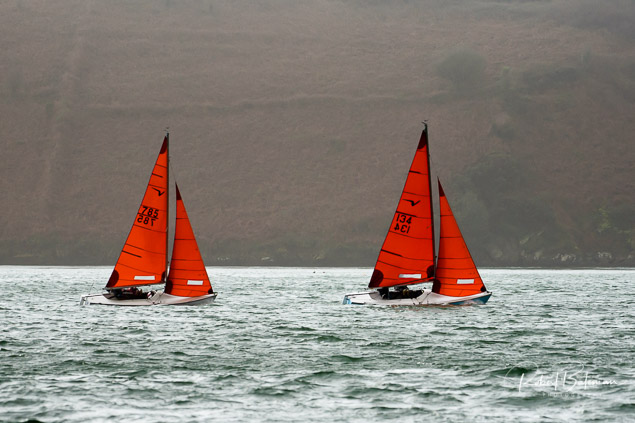

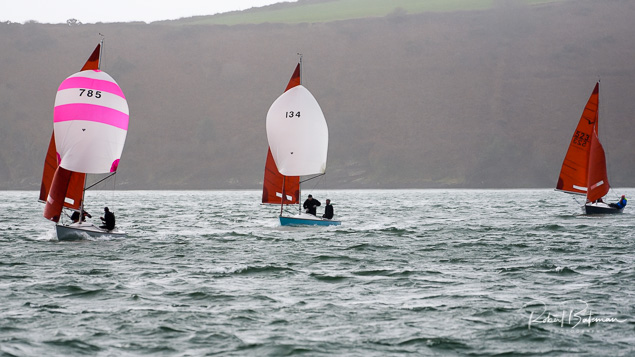
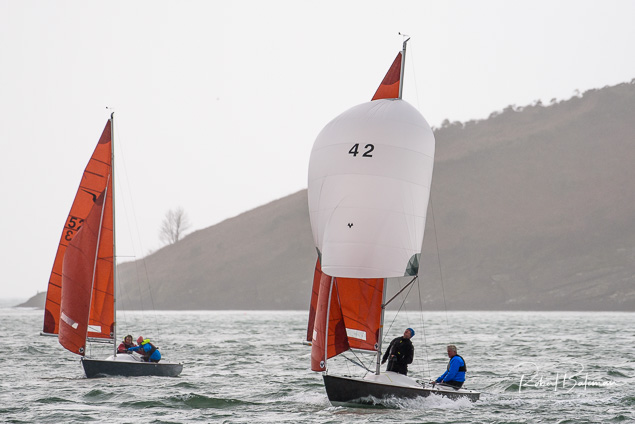

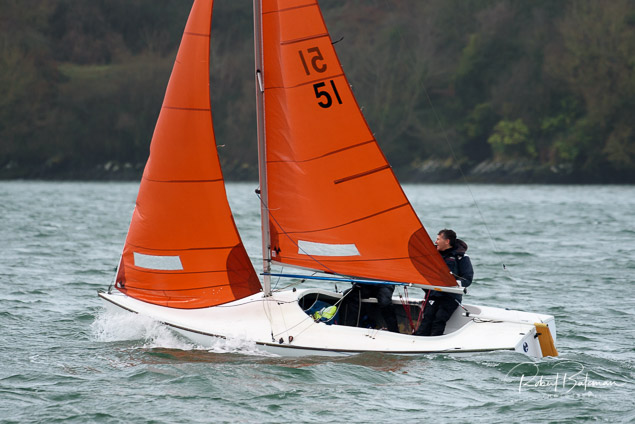
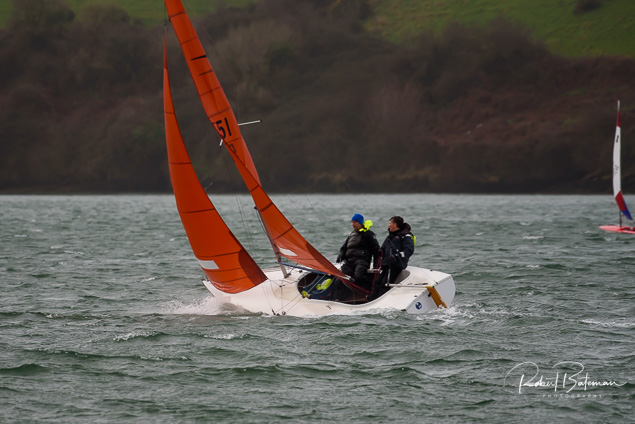
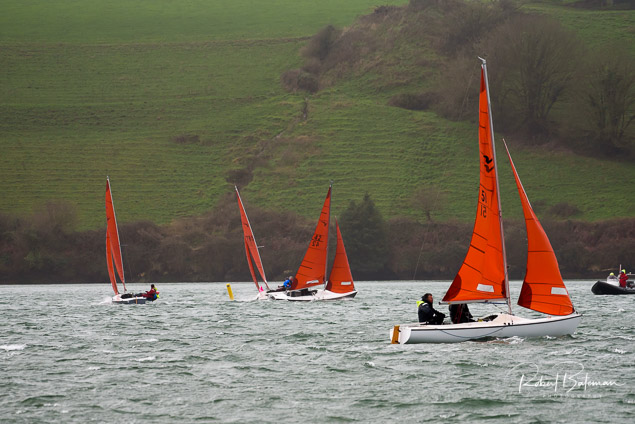

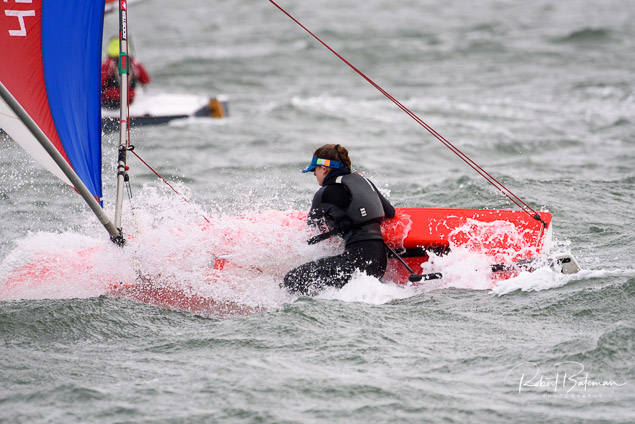
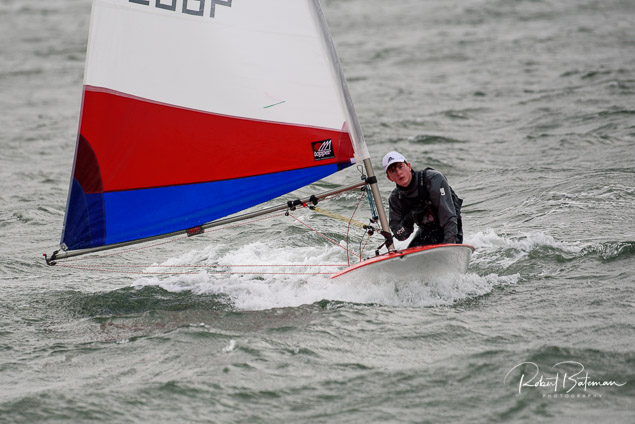
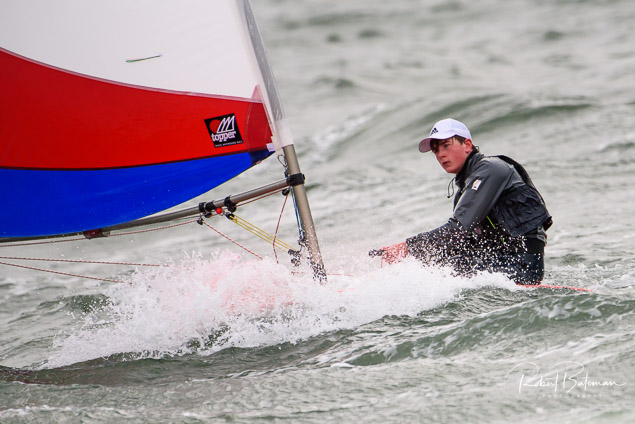


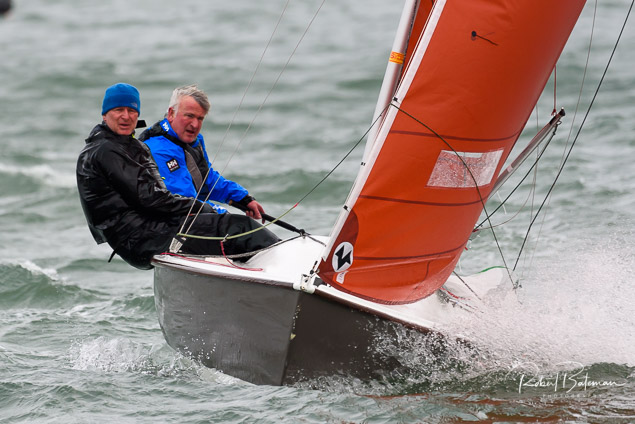
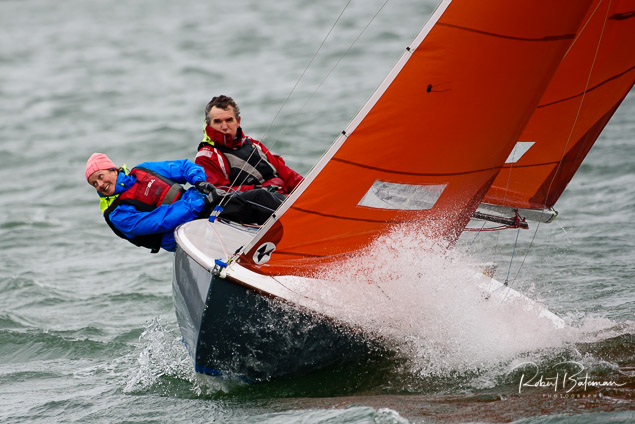
Kinsale Yacht Club Hosts Town's Win of National Enterprise Town Awards
A big celebration evening took place at Kinsale Yacht Club on Thursday night last to mark Kinsale’s win at the recent Bank of Ireland National Enterprise Town Awards writes Brian Goggin of KYC.
Kinsale took home the National title for the most Enterprising Town in Ireland. This is a fantastic achievement for the progressive, forward-thinking town that seems to keep on pushing boundaries and never stops developing.
Of course, Kinsale Yacht Club is a proud share in the town’s success and the yacht club, with its stunning location on the waterfront, was selected as the location to celebrate the towns win.
Mike Walsh, the current Commodore of Kinsale Yacht Club, together with former mirror ace Ciaran Fitzgerald and Dragon sailor David Good is also involved in Kinsale Chamber of Tourism and Business and were heavily involved in the bid for the award along with many other businesses and voluntary organisations in the town
Mike welcomed the gathering to the yacht club before passing proceedings onto Minister Jim Daly who said: “Kinsale Town is a natural leader when it comes to fostering Enterprise. Geography and History have both been very kind to Kinsale, but it is the homegrown, cross-community, can-do approach that has resulted in Kinsale rightly being recognised as a leading Enterprise town in Ireland”.
Eilis Mannion, Head of Bank of Ireland for County Cork officially presented the award to Kinsale. Commenting on Kinsale's win she said, "We saw what happens when a team comes together and collaborates right across the whole community". The win is indicative of the hard work and dedication of many businesses and enterprises but also of the community spirit which is at the heart of everything in Kinsale.
The yacht club look forward to further working with the town with big events like the Squib Nationals and Dragon Gold Cup on the horizon for 2020
Kinsale Yacht Club’s “Woman on Water” in Australia Tops the Grade in Secret Men’s Business
Even by Australia’s sometimes weird boat-naming standards, calling your pride-and-joy Secret Men’s Business is a bit off the wall. Yet there is such a boat – in fact there are two, the second one being a TP52. But the first, usually known as SMB 1, is a Murray 42, built in 1996 but completely re-conditioned for 2019-2020. And during the current busy offshore season in Australia, on the bow is Stephanie Lyons, who started her sailing in Kinsale.
Her home was in Kildare, but childhood summers in Kinsale provided the sailing bug, while a taste for offshore experience was whetted by voyages on the brigantine Asgard II with Captain Colm Newport. Aboard Ireland’s sail training ship, she became not only a Watch Leader several times, but was “Watch Leader of the Year” in 2002.
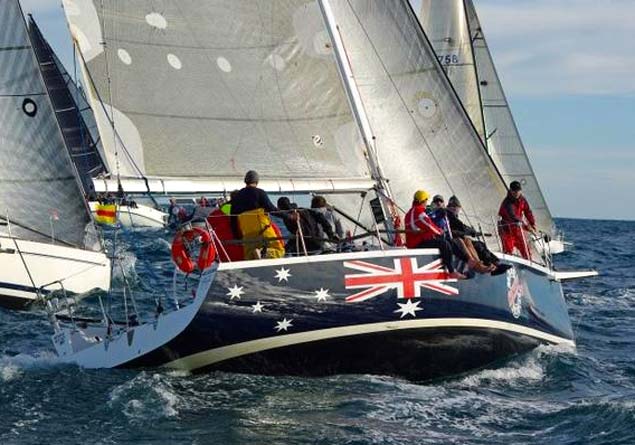 A superb restoration. The re-vamped Murray 42 Secret Men’s Business 1 in showroom condition - despite being a 1996 boat - as she heads into the current Australian offshore season
A superb restoration. The re-vamped Murray 42 Secret Men’s Business 1 in showroom condition - despite being a 1996 boat - as she heads into the current Australian offshore season
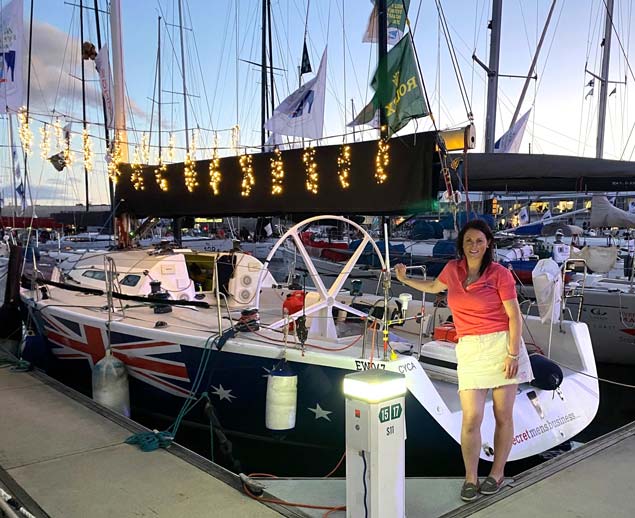 Raring to go – Christmas 2019 in Sydney sees Steph ready with Secret Men’s Business 1 for the annual race to Hobart
Raring to go – Christmas 2019 in Sydney sees Steph ready with Secret Men’s Business 1 for the annual race to Hobart
After school in Dublin, she did commerce and German in University College Cork, and qualified as an accountant, working in Dublin and doing some sailing until in 2010 she re-located to Australia, where she has become established with fund organisation EISS Super as Chief Risk Officer.
She’d resumed sailing, notably with that renowned Sydney Harbour institution, the Balmain Sailing Club, and was soon involved with the hyper-competitive Sydney 38 Class (another Murray Burns & Dovell design), sailing mostly with Larki Missiris on Wild One, which was going so well that in 2017 and 2018, Wild One took the Rolex CYCA Trophy.
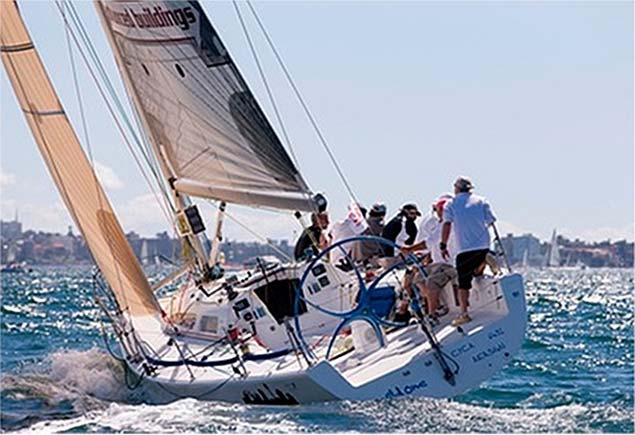 Sydney 38 Wild One going sweetly
Sydney 38 Wild One going sweetly When Wild One wins a prize, it is bow-woman Steph Lyons who is nominated to take the honours
When Wild One wins a prize, it is bow-woman Steph Lyons who is nominated to take the honours
But the Missiris crew – like many other Sydney 38 teams – prefer the class’s intensive semi-inshore annual season-long series to the time-consuming offshore campaigns which have the Rolex Sydney Hobart Race as their peak. So for an opportunity in 2016’s race to Hobart, Steph transferred to the First 47.7 Chancellor, and in the current season, she has fitted in time for offshore commitment at the sharp end of Secret Men’s Business 1.
In the hatchet job which is the way the RSHR results pan out in the end-of-race Derwent Driftathon, SMB 1 was plumb in the middle of a cohort which fell on the wrong side of the results. But they managed a respectable result nevertheless, with more boats astern than ahead. And the Australian offshore season 2019-2020 continues for a while yet, with further campaigns for Steph both with SMB 1 and back with the Sydney 38s, this time on the bow in Thirlmere.
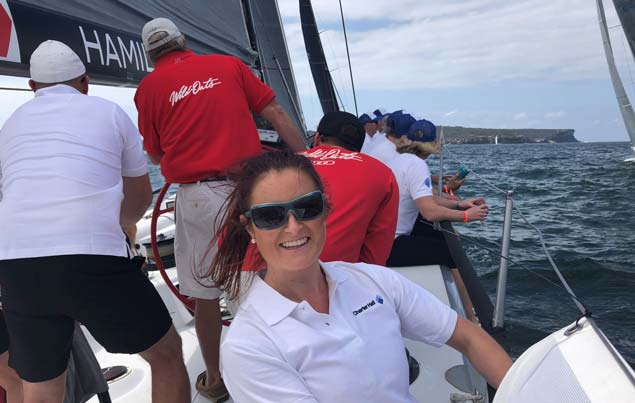 Busy day at the office….Steph Lyons as a corporate guest aboard the famous Wild Oats XI
Busy day at the office….Steph Lyons as a corporate guest aboard the famous Wild Oats XI
She certainly packs a lot into her sailing, as recent experiences have included sailing on the famous Supermaxi Wld Oats XI through a corporate event. But meanwhile, she and fellow women members of the Balmain club have been putting together a campaign team to take part in the Tricentenary Volvo Cork Week in July, sailing the chartered First 36.7 Altair.
The word is that there’ll be just one man in the Altair team. They had to find somebody to make the coffee……..
Kinsale Yacht Club Shares Its 2020 Vision
With the Kinsale Yacht Club commodore baton being passed from David O’Sullivan to Michael Walsh in December last year, the new commodore is rallying his troops for a busy year ahead, writes the club’s Brian Goggin.
One busy committee member will surely be Matthias Hellstern, who moves into the vice commodore position with responsibility for sailing.
And there is certainly plenty of sailing this season in Kinsale despite it not being a Sovereign’s Cup year.
The hardy sailors will test the waters next month for the custom rigging Frostbites, with the cruisers getting dusted down and going racing in March for the Frank Godsell League.
April brings the highly competitive Cruiser Spring Series and will also see the Dragons launch, somewhat earlier than normal, with a training weekend planned with international sailor and coach Martin Payne.
May sees the Barry Ryan Keelboat Regatta for Dragons and Squibs, numerous club trophy races and the competitive national events will truly kick off with the Optimist Munsters.
The Toppers and Triangle Race visit in June, a month which will also see one of the biggest events in Kinsale this summer with the Squib (British) Nationals. Eyes will firmly be on local Squibbers Colm Dunne and Ian Travers to see if they can maintain their 2019 form and cause an upset against the other top English and Irish teams.
July sees the juniors take over with sailing courses and it also looks to be an incredibly intensive year for some of Kinsale’s brightest talent
July sees the juniors take over with sailing courses and it also looks to be an incredibly intensive year both nationally and internationally for some of Kinsale’s brightest talent so be sure to watch out for names such as Michéal O’Sullivan, Dorothy Matthews and Francesca Lewis.
July also means Cork Week and the Kinsale cruisers and Dragons will make the short trip over to our friends in the Royal Cork to help celebrate their 300-year anniversary.
August will see many cruisers head west for Calves Week, numerous club trophies and of course Kinsale Regatta. The Dragons will also get getting ready for the Gold Cup with a warmup event on the last weekend of August.
Of course, Kinsale is well respected for its sailability class and the club can look back proudly at the incredibly successful and enjoyable inclusion games run last year.
Under the watchful eye of Donal Hickey, this class continues to go from strength to strength and Kinsale will send upwards of 30 sailors to the President’s Cup and Hansa Nationals in Carrigfergus in August, as well as a busy local schedule of events and weekend sailing. Donal is also busily fundraising for additional boats due to the demand of more sailors looking to join the fun.
The ‘big one’ lands in September with the Dragon Gold Cup and over 70 boats are expected to join the strong South Coast contingent
The ‘big one’ lands in September with the Dragon Gold Cup and over 70 boats are expected to join the strong South Coast contingent.
This event was awarded to Kinsale on the back of the successful 2012 event and already event director Tony Kingston reports that entries have been received from Switzerland, Portugal, Spain, UK and Belgium, with lots more expected over the coming months.
The home club expect to have eight Kinsale boats competing and should certainly be represented at the sharp end of the fleet with Cameron Good and crew on Little Fella among the ones to watch.
September is also the month for the always popular at-home regatta, while October to December will see local leagues and club trophies return. The season wraps up on St Stephen’s Day with the popular Gunsmoke Bell, sponsored by the evergreen Sammy Cohen, a man who can be credited with showing many of Kinsale’s finest sailors the ropes and the joys of yacht racing
Of course, Kinsale is a club that is dependent on its volunteers and Dave Cullinane, sailing secretary and winner of the club person of the year, will be totally reliant on volunteers to run all of the events — something for which Kinsale is tremendously grateful and proud of its members and sponsors.
Mike Walsh Takes the Helm at Kinsale Yacht Club
Kinsale Yacht Club has elected Mike Walsh as Commodore. Walsh, a former director of KYC's biennial Sovereign's Cup takes over the helm from outgoing flag officer Dave Sullivan.
In a big year on the water for Kinsale, the West Cork club will stage the Squib National Championships in June and the Dragon Gold Cup in September. Read Afloat's preview here
KYC's new Vice Commodore is Matthias Hellstern. The Rear Commodore (House) is Susan Horgan. Rear Commodore (Marina) is Anthony Scannell and Rear Commodore (Membership) is Maeve Cotter.
Lysaght's 'Reavra Too' Wins Gunsmoke Bell Race at Kinsale Yacht Club
Six sailing cruisers raced for the Gunsmoke Bell on St.Stephen’s Day at Kinsale Yacht Club in the annual event sponsored by Sam Cohen.
The winner was Stephen Lysaght’s Reavra Too, with Michael Carroll’s Chancer second and Sam Cohen himself sailing Gunsmoke II into third place.
Three Kinsale Yachts Tie for First Place in October League
Kinsale Yacht Club’s October Whitesail series concluded with three yachts in a tie for the top places in the ECHO fleet writes Tom MacSweeney
Valfreya (Leonard/Riome), Justus (Dan Buckley) and Godot (John Godkin) all finished on 11 points. After one discard was allowed over the five-race series, when the tie-breaker was brought into play, the Sigma 33 Valfreya, got first place with the J/109 Justus second and the Dufour 44/Godot third.
There was also a tie in the IRC fleet but here John Godkin’s Godot was the clear winner on 6 points overall. The tie was between Dan Buckley’s Justus and the Carroll Brother’s Elan, Chancer, both finishing on 8 points. It favoured Justus which got second place with Elan third.
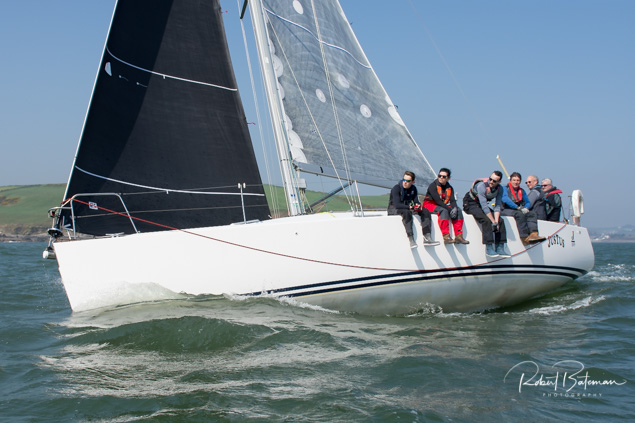 J109 Justus Photo: Bob Bateman
J109 Justus Photo: Bob Bateman
British Sailors Dominate International 2.4mR Open Championships at Kinsale
Ireland was outclassed as British boats took the podium places at the International 2.4mR one-person keelboat Irish Open Championships at Kinsale Yacht Club today.
Megan Pascoe, a past World and European champion in the class, dominated the four-race event with four straight wins and was followed by Katherine Hedley with four seconds. Brian Harding was third. The top Irish sailor was John Patrick in sixth place overall.
Five UK visitors travelled to Kinsale for the championships.
With Saturday's racing washed out as Afloat reported here, the pressure was on to complete all racing today in the ten-boat fleet.
It is the first time the event was held on the south coast with last year's championships held on Carlingford Lough.
Sunday dawned with a flat calm but racing soon got underway with London 2012 Olympic Race Officer Jack Roy in charge.
Races were each of 40 minutes duration in the 10-knot winds from the northwest.
At the first start, the wind took a big shift moving from NW more into the north and so Roy abandoned that start to allow the course be moved.
Results are here.
The boat is primarily used for racing and the class holds highly competitive national events in many countries. In some countries, it features mainly as a class for sailors with a disability.
The 2.4mR is ideal for adapted sailing since the sailor does not move in the boat, and everything is adjustable from right in front of the sailor. Both hand-steering and foot-steering are possible.
Scroll down for photo gallery by Bob Bateman
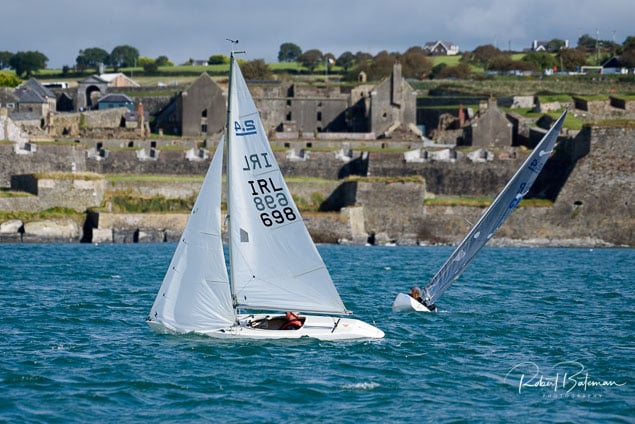 Top Irish sailor John Patrick against the backdrop of Charles Fort
Top Irish sailor John Patrick against the backdrop of Charles Fort
 Adam Billany
Adam Billany
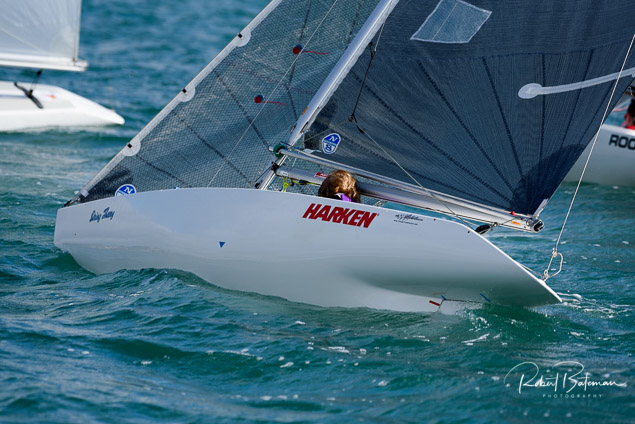 Katherine Hadley
Katherine Hadley Sunlight and shadows
Sunlight and shadows
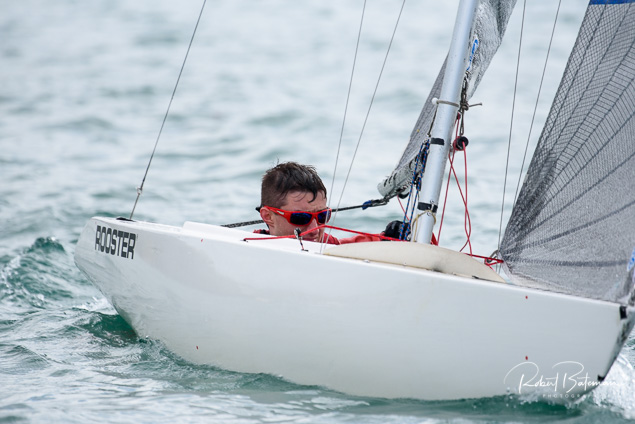 Adam Billany
Adam Billany
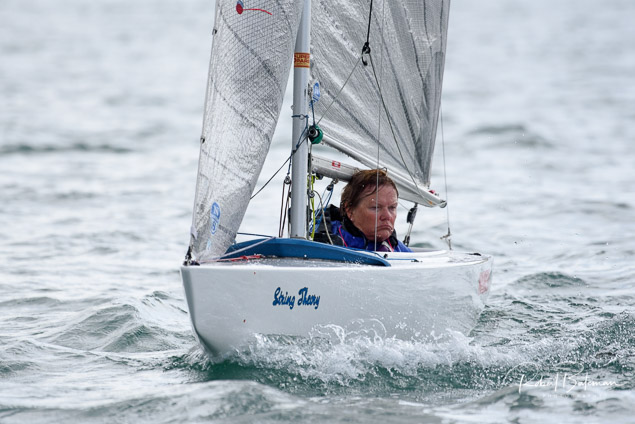 Katherine Hadley
Katherine Hadley
 Adam Billany
Adam Billany
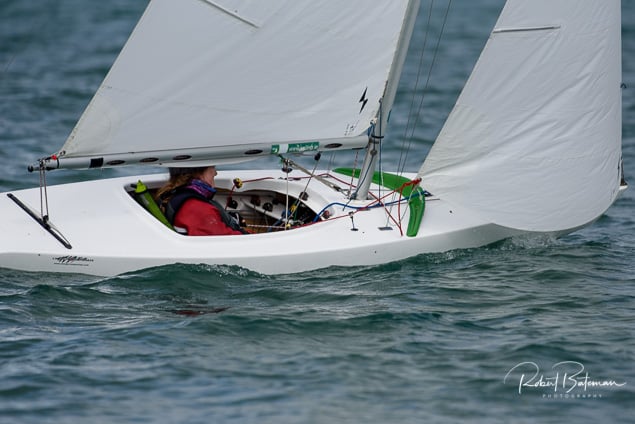 Georgina Griffin
Georgina Griffin
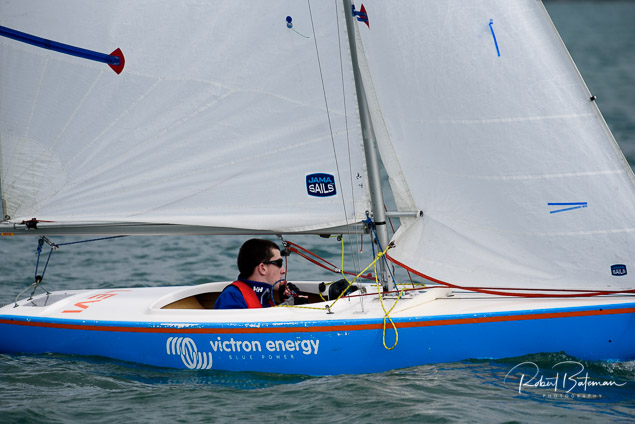 Patrick Hassett
Patrick Hassett
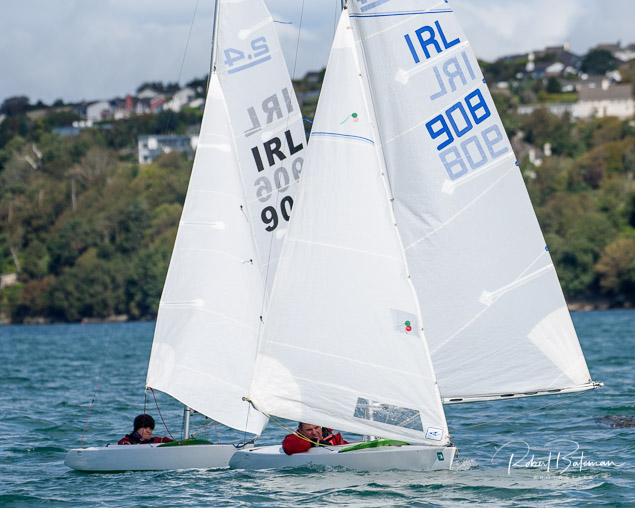
 Winner Megan Pascoe
Winner Megan Pascoe
 Brian Harding and Adam Billamy
Brian Harding and Adam Billamy
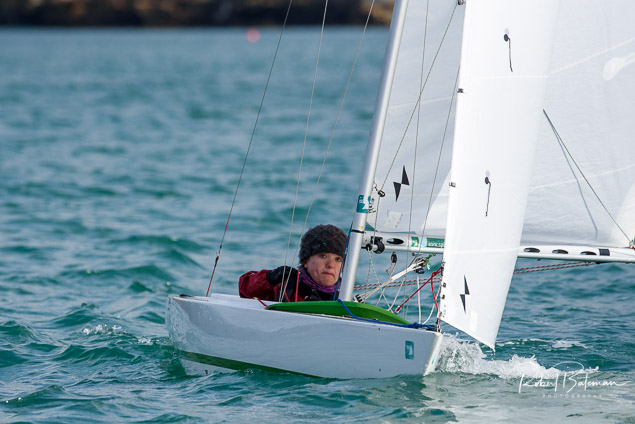 Gina Griffin
Gina Griffin
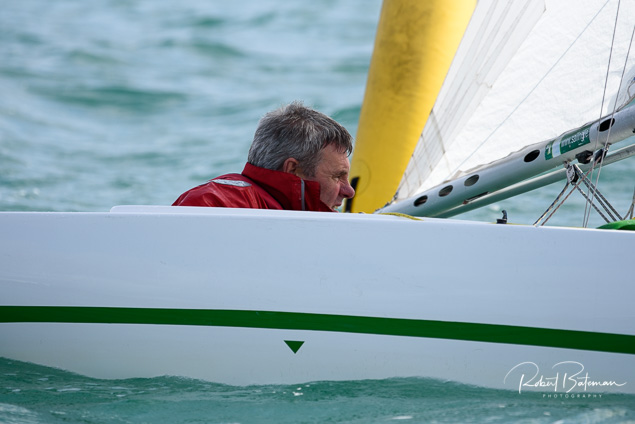
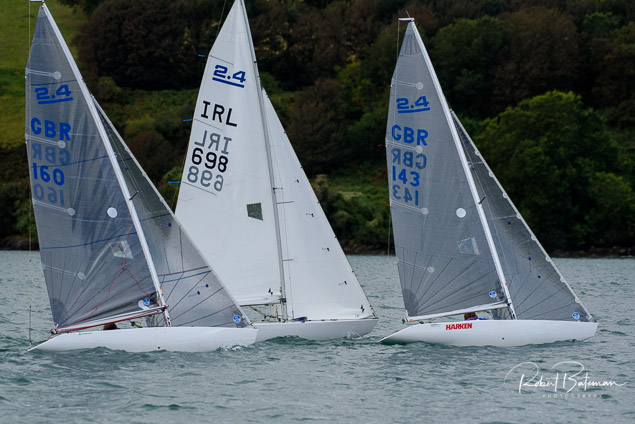
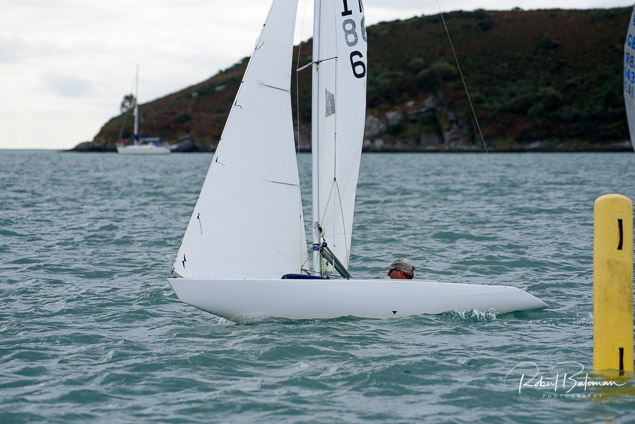
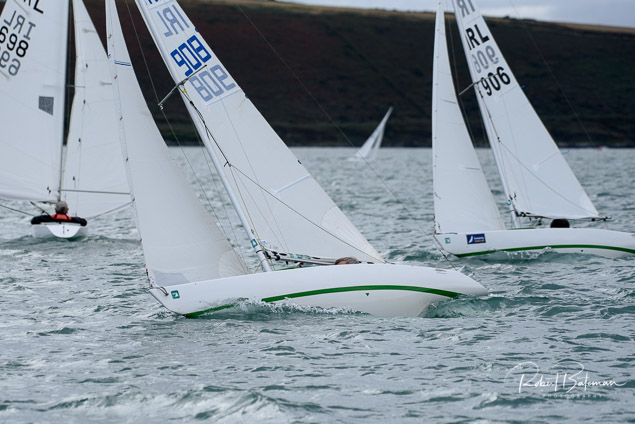

 A group of GBR visitors with Donal Hickey
A group of GBR visitors with Donal Hickey
 Sailability Leader in Kinsale Donal Hickey
Sailability Leader in Kinsale Donal Hickey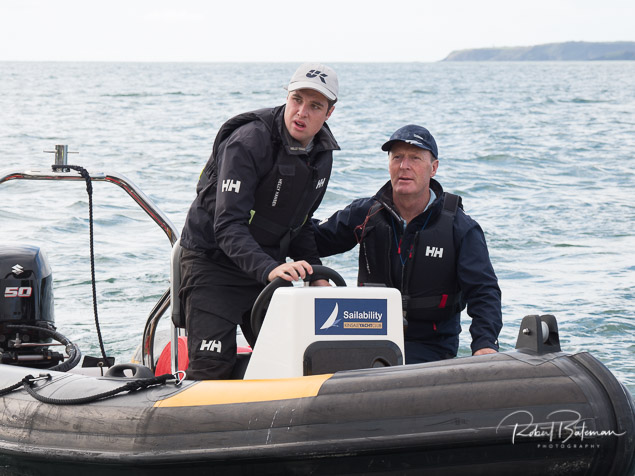

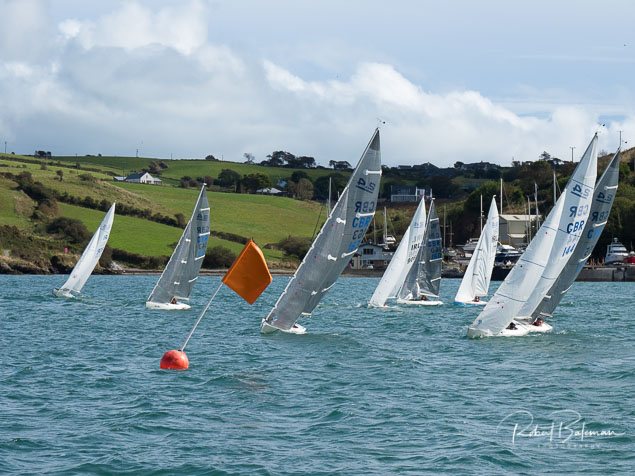
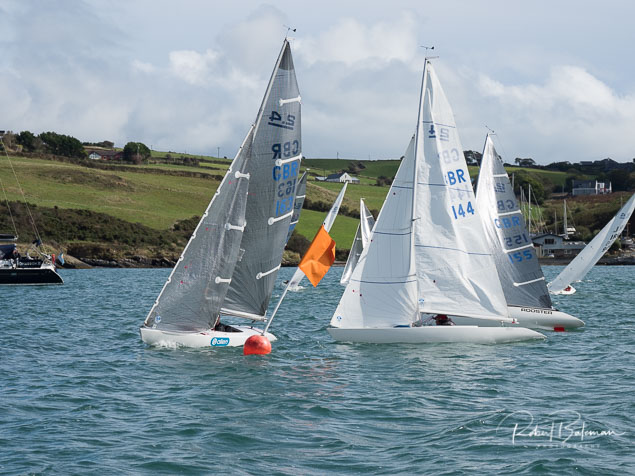
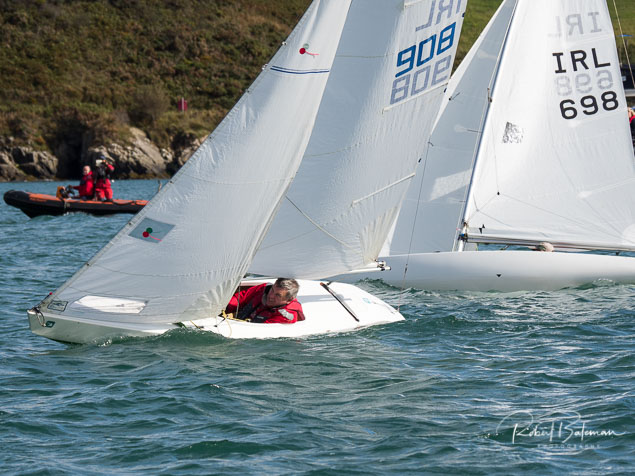
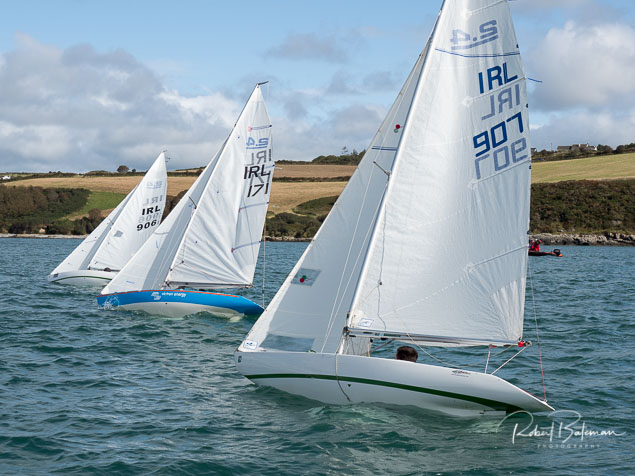
 The Race team Jack and Rosemary Roy, Commodore David O’Sullivan and Mel McIlwaite
The Race team Jack and Rosemary Roy, Commodore David O’Sullivan and Mel McIlwaite
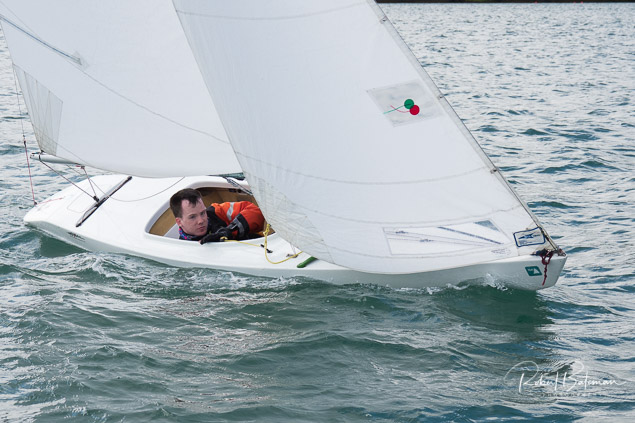
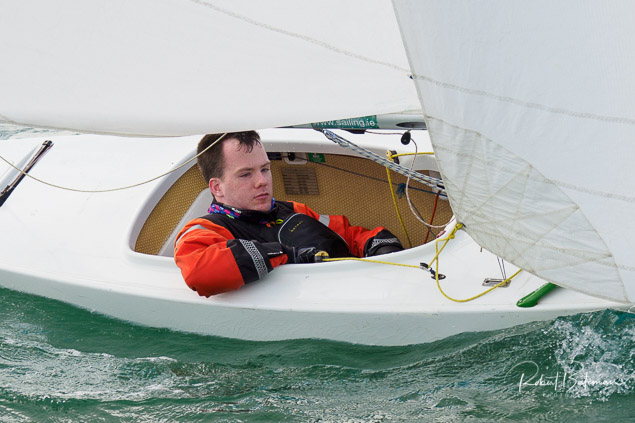

Kinsale Yacht Club Spalpeen Race Raises Funds for RNLI
There is a sentence that is banned in every lifeboat station. That sentence is ‘It sure has been quiet round here.’ Because, as sure as eggs ‘is eggs, the Gods will start a passenger liner sinking at the mouth of your harbour writes Dave O'Sullivan.
Our sport is littered with, fingers crossed, piseogs. And in this light, many sailors treat RNLI fundraisers as a kind of cosmic insurance. The more I pay, the less chance I will get to meet these people in their full professional capacity. Or, God forbid, if I do need them then I will get special attention.
So Kinsale Yacht Club came out in force last night to have a great race, a great party and pay an instalment on the cosmic insurance.
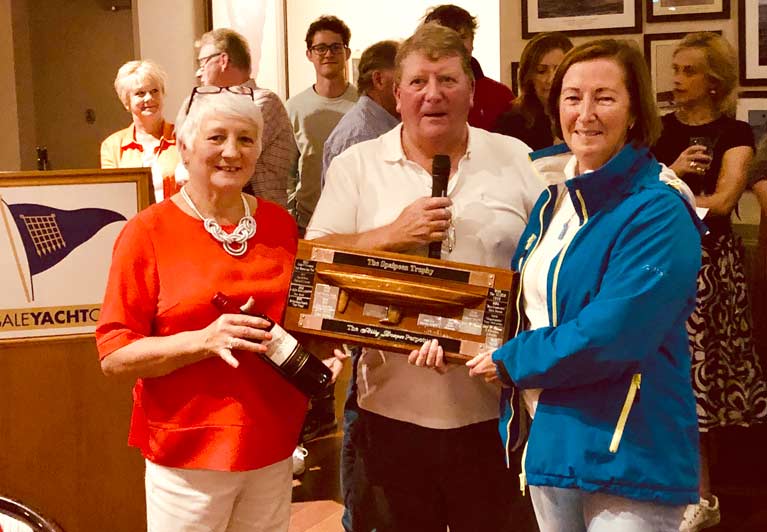 Susan Draper (sponsor) with Dave O’Sullivan (KYC Commodore) and Julie Silverberg (Freya) Photo: Elma O’Sullivan
Susan Draper (sponsor) with Dave O’Sullivan (KYC Commodore) and Julie Silverberg (Freya) Photo: Elma O’Sullivan
Twenty yachts turned up on the start line to join race officers Ruth Ennis and Donal Hayes. It is always difficult to set a course that will satisfy both an Xp50 and a squib but the winds were kind and the seas were flat and the race officers set a testing course that got the fleet home before dark. Freya led from the start and the main nip and tuck battles happened mid-fleet. Y Dream, Artful Dodger and Siboney were all biting at each other. No Notions, Runaway Bus and Shillelagh had another battle royale in the middle and, in the end, it was always going to be difficult to guess how the handicaps would impact.
Continuing the good karma of the evening the results were well deserved and popular. Freya was unbeatable, followed by John Stallard’s Siboney and Patrick Beckett’s Miss Charlie.
The main ‘finances’ of the evening followed, and a tough crowd was well managed by an ‘on form’ Commodore for the annual auction. He entertained, barracked and cajoled an increasingly willing audience to part with the maximum amount of cash. There were great bargains to be had although there will be some sore heads this morning wondering why they have a discount voucher for ballroom dancing in their blazer pocket. The club Treasurer was particularly generous and will cut quite a dash in his new Fascinator Hat.
When the accountants finished their bean counting this morning it was revealed that the event raised more than €8,000! A number of people put in huge work but this amount exceeded the most optimistic estimates.
The event is known as the Spalpeen Trophy and is run in memory of Billy Draper, a long-time member and friend of Kinsale Yacht Club. Billy would have approved of last night, a night to be proud.
Results here


























